Editor’s note: The original article was published in 2011 and updated in 2019 by Mark.
Colombia is a country known for its biodiversity. In fact, after Brazil, it is the most biodiverse country in the world. The biodiversity of Colombia means that the country is awash with flora, forests, and delicious fruit.
Colombia is not just coffee and cocoa plants. The country has almost every type of ecosystem. This makes it the ideal location to grow an enormous variety of different, exotic fruits.
Here at Medellin Living, we have compiled our list of the top 10 exotic fruits you have to try during your time in Colombia:
1. Guanabana
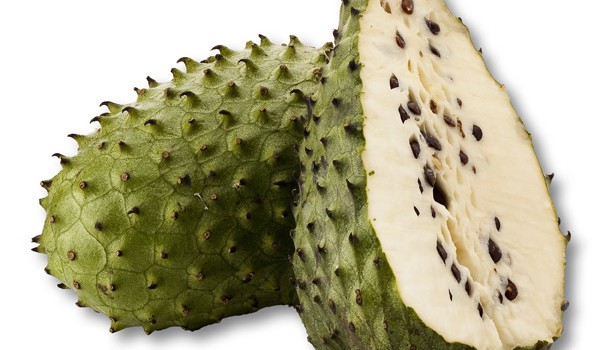
Guanabana (sometimes referred to as ‘soursop’) is not a fruit to be messed with. Although the spikes are not as severe as durian, it is recommended you do not eat the skin. Furthermore, the black seeds are highly toxic. You should stay aware of them, too!
However, do not let that put you off. Guanabana’s white pulp is soft and the texture is similar to custard. Its enticing aroma is best compared to a banana or a pineapple. Soursop’s uniquely acidic flavor is best enjoyed by cutting the plant in half and scooping out the pulp. However, it often enjoyed as a fruit juice in Medellin.
Guanabana is very high in antioxidants. Although, it has further health benefits and uses throughout the world. For example, in Trinidad the leaves of the plant are boiled into a tea to aid sleep.
2. Cherimoya
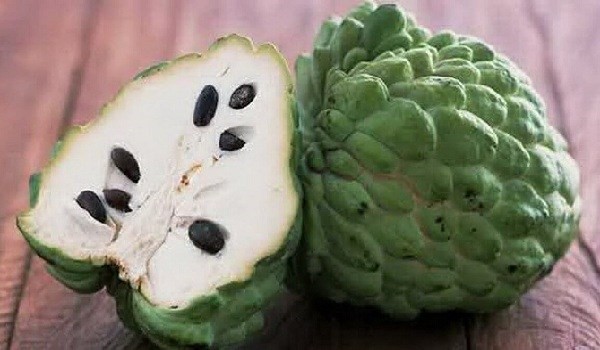
I know what you’re thinking. This fruit does look familiar. Cherimoya is also known as ‘sweet apple’ and is of the same genus as Guanabana.
The similarities are obvious in its appearance, but also in the texture of the pulp. Likewise, Cherimoya has a soft pulp that is reminiscent of custard. However, it is a little sweeter and smaller than its bigger brother.
Famous autor, Mark Twain, once described the sweet apple as, “the most delicious fruit known to man”. In addition to its great taste, Cherimoya has very high levels of potassium. Therefore, it’s very good for your blood pressure and heart rate.
Cherimoya is also used by indigenous people to treat lice! For years, they have dried and ground down unripe sweet. Then, they apply the powder to lice-ridden hair. It truly brings a new meaning to the term ‘super food’.
3. Mangosteen
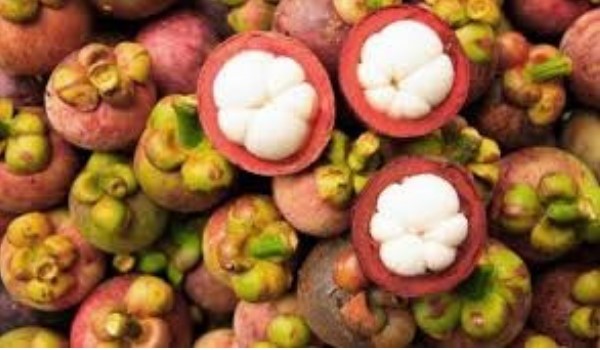
As aforementioned, the Chiramoyas were held in high esteem by author Mark Twain. Similarly, the Mangosteen has also had some fans in the public eye.
In 1890, Queen Victoria discovered that her new favorite fruit quickly spoiled in the European climate. As a result, she offered anyone who brought her a mangosteen a knighthood. Whether the story is true or not, the mangosteens’ nickname, ‘the queen of fruits’, seems justified.
The mangosteen has a hard-purple colored outer shell, which must be removed. The inside contains white-colored segments, reminiscent of an orange. However, the taste is a cross between a lychee and a peach.
The fruit is available in Medellin, but it is a little more expensive due to it not being grown locally. Although, a few extra pesos are worth it for a fruit that is considered royalty.
4. Uchuva
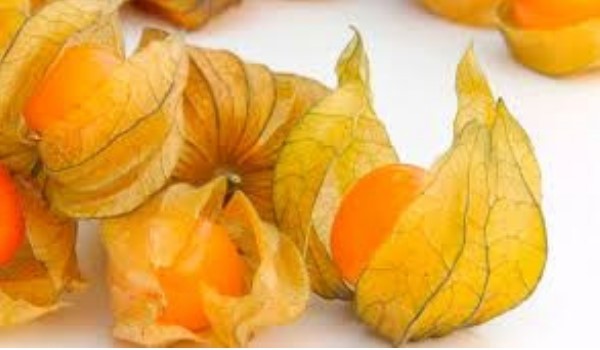
Uchuvas go by a variety of different names. They are natively Peruvian. They can be referred to as a ‘physalis peruviana’ or an ‘Inca berry’. In English, they are often called ‘golden berries’ or ‘gooseberries’. However, whatever name you give them, they remain delicious.
The majority of uchuva’s are grown along the mountainous coastlines of Perú and Chile. However, they are also cultivated in Colombia.
The fruit itself is encased in a beige husk which must be peeled off before consuming. The texture is similar to a tomato, but the taste is much more tropical. It is often described as a hybrid of a mango and a pineapple.
Although the husk is inedible, it gives the berry a decorative quality. As a result, it is common to find them used as a garnish for high-end desserts throughout South America.
5. Carambolo
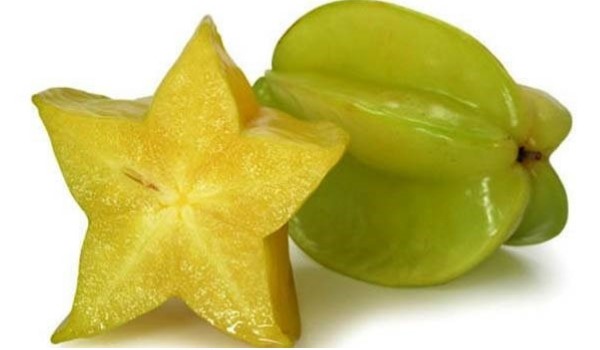
Carambolo is another fruit that is ‘easy on the eye’ and used as a decorative garnish.
Outside of Medellin, you will most likely know this as a ‘star fruit’. It doesn’t take a rocket scientist to figure out where it gets its name from.
It originates from Sri Lanka, but it is now grown in the Americas. The fruit prospers in moist conditions. Furthermore, it is often enjoyed as a fruit juice in Colombia. If it’s not in the juice, it may be used for décor at the top of your glass.
Unlike a lot of the fruits on this list, carambolo is unique in that all of its parts are edible and flavorsome. Furthermore, star fruit’s high vitamin C content does wonders for your immune system.
6. Maracuyá
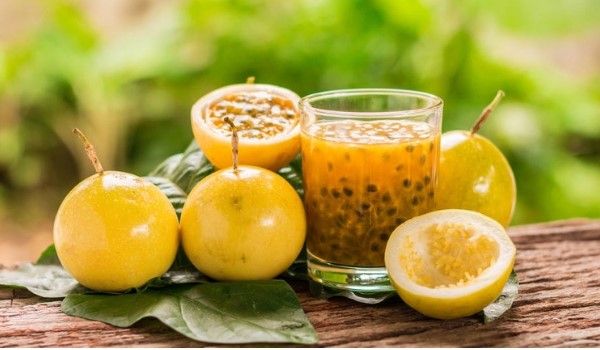
South America is awash with different varieties of passion fruits. However, maracuyá is arguably the most popular and beloved in Colombia.
Maracuya is mostly consumed as a drink. However, it’s tart-flavor lends itself to delicious varieties of ice cream that are readily available through Medellin.
Although, if you’re only looking to eat the fruit it is also ‘muy rica’. To eat it you open its shell, scooping out the seeds and the gloopy jelly. It is easier and cleaner to do this with a spoon.
If you are choosing a maracuyá, it is important you chose one that feels heavier. These will last longer and are more ‘fruit-full’.
7. Guama
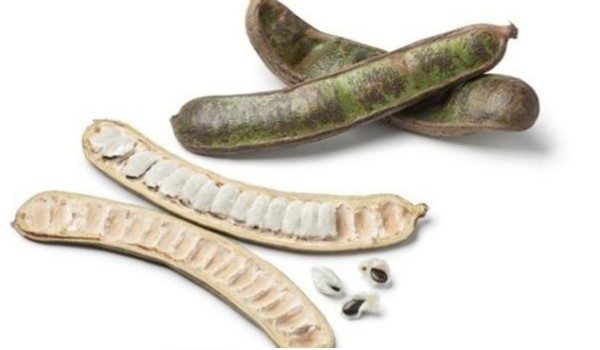
Guama is a particularly sweet fruit that is sometimes referred to as ‘ice cream bean’.
Whereas maracuya is often made into an ice cream flavor, guama’s white pulp actually tastes like vanilla ice cream. The seeds can be cooked and eaten too, but their taste is savory and similar to chickpeas.
Guama can be known to lower cholesterol levels. Furthermore, it is often used as a flavoring agent in health-conscious desserts. This is perfect for people who have a sweet tooth but are looking to stay trim.
This legume is a life-saver if you sometimes over-indulge in the sweeter things in life.
8. Lulo

Lulo’s origins are based in Quitos, Ecuador. The scientific name for the fruit, “Solanum quitoense”, is directly lifted from the name of the capital city.
However, similarly to Perú, Ecuador now refers to the fruit as a ‘naranjilla’ (small orange)
Despite the color, there are few similarities with an actual orange. Lulo’s texture is more comparable to a tomato and the fruit has a citrus twang. It tastes more like a combination of a lime and a rhubarb. However, aside from renaming it, Colombian’s have put their own unique twist on Lulos.
In Cali, the fruit is often fermented and drunk as a ‘Lulada’. The fermented lulo is mixed with lime juice, sugar, and water. The consistency is similar to a smoothie. Furthermore, a lulada is best enjoyed with a shot of vodka on the side.
We are yet to find one in Medellin but if you try a lulada, let us know!
9. Chontaduro
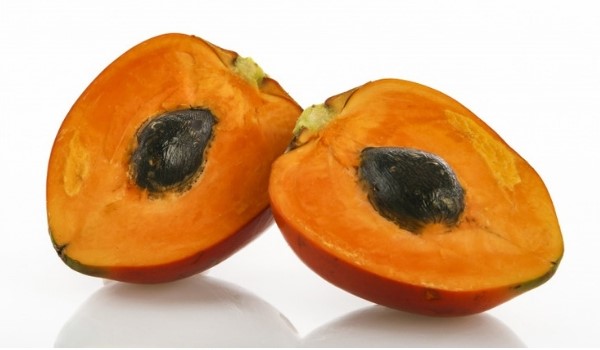
In English, a Chontaduro is known as a ‘peach palm’. However, it tastes very different to actual peaches.
Luladas are one of the most popular drinks in Cali, but Chontaduro is widely-recognized as the providence’s favorite fruit.
The taste and texture are wildly different to others on the list. It has a floury texture similar to a sweet potato or butternut squash. This can make the fruit seem fairly dry. However, people often add salt or honey to enhance its flavor.
Those who eat Chontaduros often don’t do so for its taste. The fruit has some incredible health benefits. Firstly, one serving of peach palm has as much protein as an egg. Furthermore, Chontaduro supposedly does wonders for male virility. Despite a lack of research, the fruit is somewhat lovingly known as ‘the nation’s viagra’.
It’s a little rare in Medellin, but some supermarkets do stock peach palms.
10. Pitahaya

This fiery fruit is more commonly known as a ‘dragon fruit’. It comes from three types of indigenous cactuses found in the Americas.
Pitahaya is probably the most refreshing fruit on this list. The inner white-colored pulp is rich in moisture and is perfect for summer days in Medellin.
At first, the fruit is a little intimidating. How do you prepare that? However, it’s relatively straightforward. You cut through the pink outside and slice it into quarters.
Dragon fruit tastes similar to a pear or a kiwi fruit. However, the skin is best avoided as it’s extremely bitter.
The chemical that causes pitahaya’s pink coloring, ‘lycopene’, has shown to dramatically reduce the risk of prostate cancer. However, the fruit should be consumed sparingly because of its high levels of fructose.
——————————————————————————————————————————-
Have you tried any of these? What did you think? And what fruits did we miss? Let us know in the comments!
And click here to read the list of 22 exotic tropical fruits!


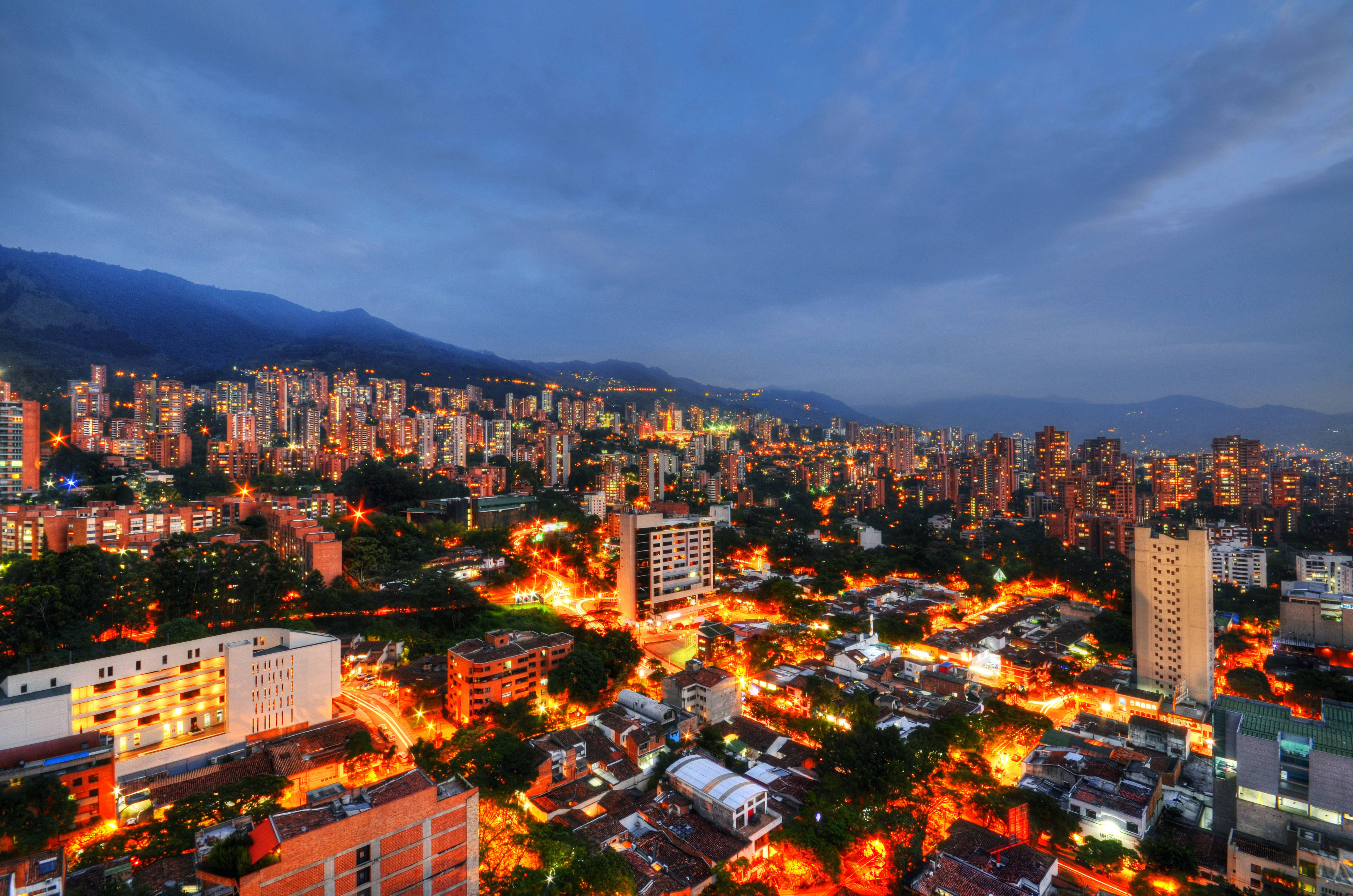








My favourite is LULO juice…. but I also tried MANGOSTEEN in a market in Bogota’ and I liked it.
I never saw mangosteen before!
http://en.wikipedia.org/wiki/Purple_mangosteen
Ciao
Ciao?
I think you are in the wrong continent! Italy is the other way!
When you are in Latin America you say and write “chao!”
Fabio 😉
I love finding new fruits. Whenever I’m in Brazil, I go crazy for all the kinds of fruit (fresh and as juice). My favorites are passionfruit, some different types of bananas, and of course the delicious mangoes, but it’s always fun to try new ones from the Amazon.
The fruit Zapotes is not “unusual”. In India, its called “Sapota” in the south and in north we call it “chickoo”. Its a very common and loved fruit.
Guanabana tree is a miraculous, natural, cancer cell killer 10,000 times stronger than Chemo.
In laboratory tests, graviola extract has been shown to kill certain types of liver and breast cancer cells that are resistant to particular chemotherapy drugs. One laboratory study also found that a compound isolated from sour sop seeds had 10,000 times the potency of one particular chemotherapy drug on colon adenocarcinoma cells. However, as yet, there have been no large scale tests on humans and there is no credible evidence to support claims that graviola is an effective cure or treatment for cancer. Moreover, graviola may have harmful side effects such as movement disorders and myeloneuropathy. Thus, while plant compounds in graviola may have properties that can kill cancer cells in vitro, claiming that sour sop is a “miracle unleashed” and a viable alternative to medical cancer treatments such as chemotherapy is highly misleading and potentially very dangerous.
I love guanabana!
First heard about it when I was in Mexico tasting rum. While in enjoying historic Cartagena, I had guanabana ice cream. Yum! Now, I learn about its amazing cancer cell killing properties. What a fruit!
Thank you, lost it a little when I read that part. “you fools are just here dying from cancer cause you never heard of a fruit hahahaha” – dangerous stuff
Great article! Thank you for the information. I am going to Colombia on vacation and want to try as many different fruits as possible. Can you recommend where to find these fruits in Medellin or elsewhere? Also, what is the Colombian name for cherimoya? Is it cherimoya? Thanks.
You can find most of the fruits on this list throughout the country, from the street vendors to markets, grocery stores and restaurants. Trust me, you won’t have a problem once you get here.
You forgot Nispero.
This was a great article but it could have been better had it included nutritional information about each fruit.
COROZO EN JUGO THE BEST,CIRUELAS VERDES O MADURAS.UN BUEN MANGO VERDE,
I am sorry. There are some mistakes in naming some fruits. Please check on their names and, my appologies again.
Thanks,
Gabbyelena
I am going to visit Colombia either this fall or next year. I grew up near Orlando, FL and ate a few of these fruits. Please advise me when the majority of these fruits are usually in season locally. Never been to Colombia before, so this will be a new experience for me. Thanks so much for the fruit photos with the attending notes.
Kindest regards,
Wesley Anderson
Wesland001@gmail.com
Hola
Estoy buscando la fruta de corozo.
Sera’ q ustedes la tienen aca’ en Usa.
Y si es posible tener un numero de telefono para poder comunicarme con ustedes.
Can I bring back any of those fruits with me to the United States?
No.
But I did manage to bring back some jam.
A lot of those fruits are legally imoorted. You can get the at Latino markets in big cities, especially Miami, New York and Boston, where the Colombian population is large.
Now is the time for all good men to come to the aid of their country. Nice fruit
When in one country or another in South America I found sapote fruit. Tastes like chocolate custard best fruit I ever had anywhere. I was thinking was chili maybe. Pretty certain they told me it grows in all of South America. I actually have some here in Texas brought enough to have twenty five tree of that gold here.
That pictures don’t match with the name. The pitahaya , mamoncillo, Maracuya .
This is an amazing list for sure! I love most of these fruits but my favourite would be guanabana because I use it and I love its amazing taste in my morning smoothie 🙂
In Europe we also call it Graviola or Soursop but yes, its the same amazing fruit 🙂
In the end I will just write one big
CIAO!
Just to trigger Fabio 😀
Have a good one!
Thank u for the article. It’s really informative. I planned to visit Medellin next year.